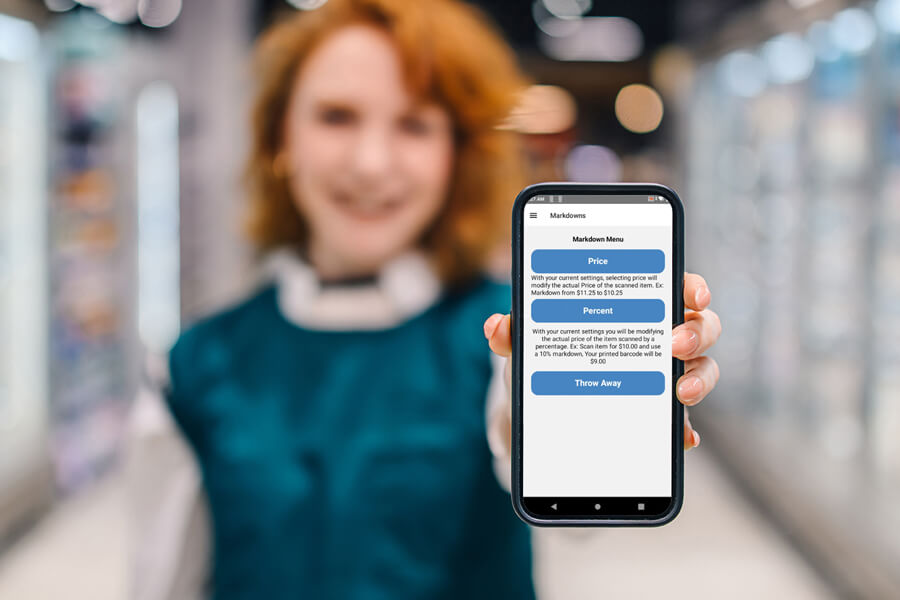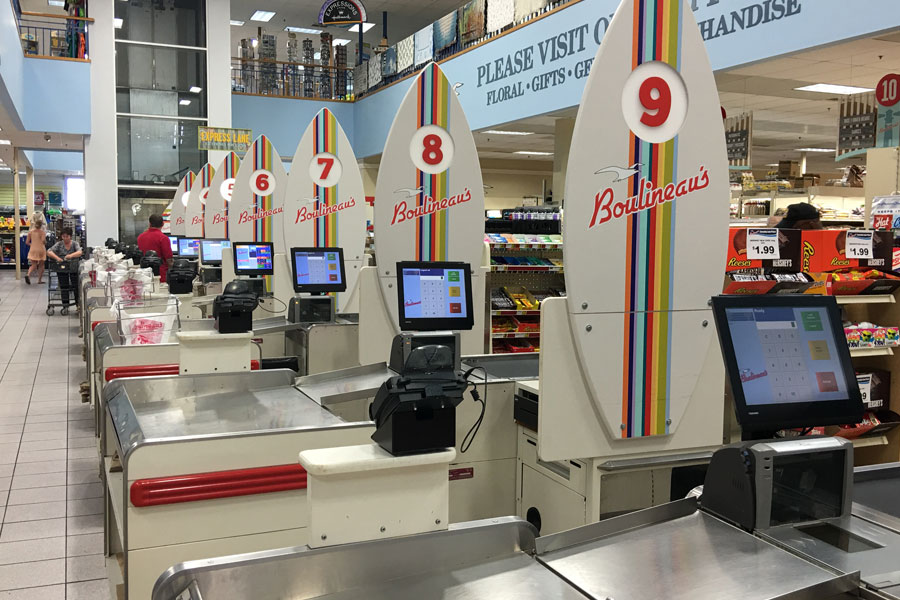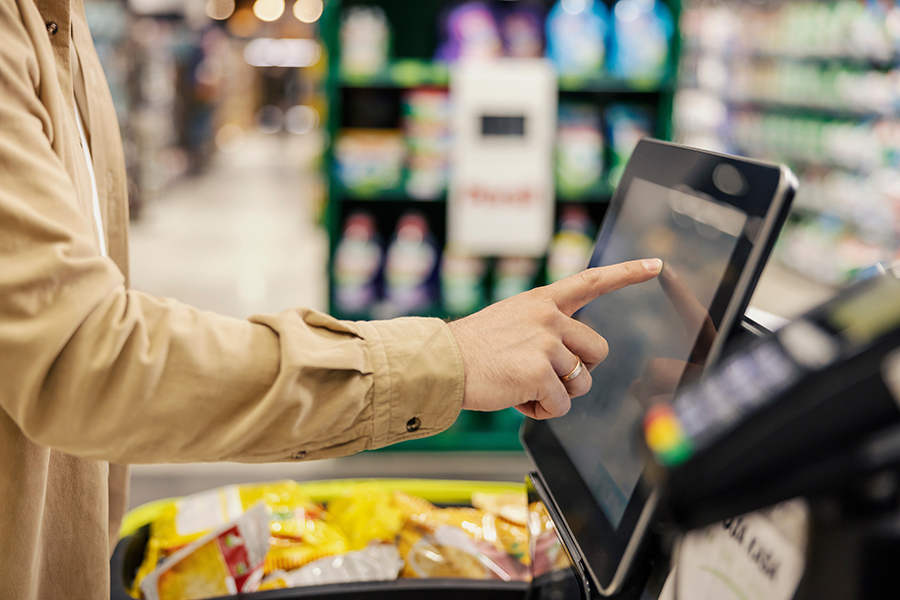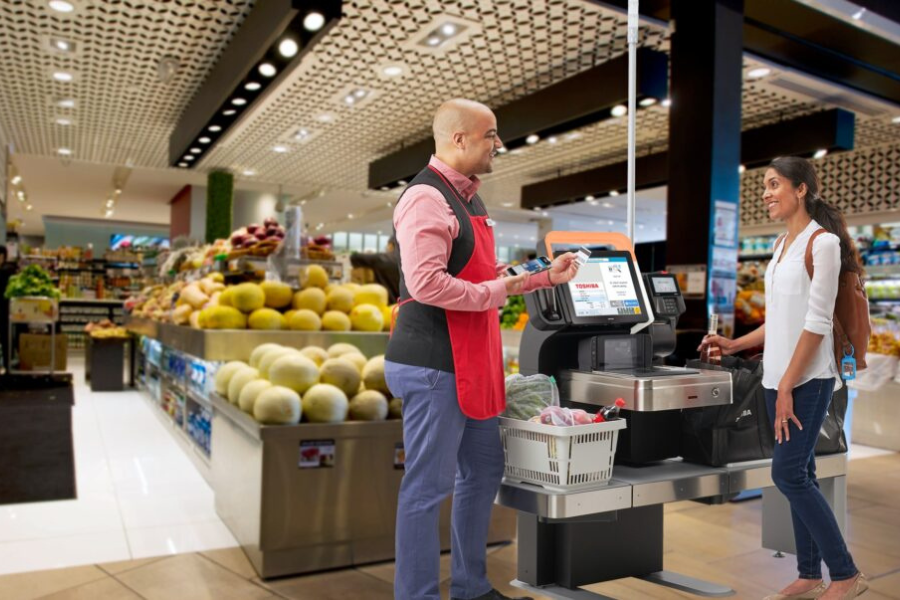8 Reasons Electronic Shelf Labels Help You Stay Ahead of Retail Change
Electronic shelf labels (ESLs) are a key player in the digital transformation of retail businesses. Paper tags cannot keep up with today’s fast-changing environments, where accuracy and speed are critical. According to Grand View Research, the global market is projected to reach USD 2.09 billion by 2025 (up from USD 1.85 billion in 2024) and grow at a CAGR of 17.4% through 2033. As a result, U.S. retailers are under increasing pressure to modernize and improve efficiency. That’s why DCR is helping retailers adopt ESLs, and below we’ll break down the core advantages driving their adoption.
From Manual Updates to Modern Efficiency
Traditional paper tags make it difficult for retailers to modify product pricing and details efficiently. Electronic shelf labels use small e-paper or LCD screens that wirelessly connect to a centralized system, allowing for instant, storewide updates. ESLs, also known as digital shelf labels (DSLs) and digital price tags, offer increased efficiency through automated, real-time updates of prices and information, resulting in improved labor costs and customer experiences.
Why Manual Pricing Holds Retailers Back
When it comes to time and resources, paper tags create challenges. Manual updates are slow and labor-intensive, decreasing staff productivity as employees spend valuable time on manual updates instead of restocking shelves or assisting customers. Additionally, manual updates are prone to errors, which can result in mismatches between shelf and checkout prices. When pricing is inconsistent, it weakens customer trust and brand reputation.
Unlocking the Value of Electronic Shelf Labels
ESLs create value storewide. They streamline operations, reduce costs, and enable smarter pricing strategies. Additionally, they support sustainability goals, strengthen customer trust, and provide digital insights retailers need to compete.
Fewer Errors, Faster Operations
Electronic shelf labels eliminate time-consuming manual processes by automating price changes that staff would otherwise handle by hand, saving time and money. Because updates are managed from a central system, prices are consistent across all locations, reducing errors and mismatches at checkout. Having accurate product information and pricing helps prevent customer complaints, refunds, and compliance issues when promotional or legal pricing must be displayed immediately.
Lower Costs, Higher Returns
By eliminating the need for constant printing, paper, and plastic tags, retailers can significantly reduce supply expenses. Fewer discarded tags cut waste expenses, while seasonal or promotional updates no longer demand more staff resources. Most importantly, the investment pays off quickly, delivering ROI within one to three years. Freed-up labor hours can then be redirected to sales, upselling, and other revenue-generating activities.
Adaptive Pricing, Better Outcomes
Dynamic pricing gives retailers the flexibility to adjust in real time. ESLs automatically update pricing, making it easy to respond to competitor changes or online pricing. They also make clearance strategies, such as markdowns for products nearing expiration or holiday specials, hassle-free. When linking with inventory systems, electronic shelf labels help prevent stockouts and expedite the movement of excess stock.
Less Waste, Stronger Sustainability
ESLs reduce millions of paper tags over their lifetime. They also help retailers align with corporate sustainability and ESG commitments by lowering the carbon footprint associated with printing and transporting materials. E-paper displays consume very little energy, making them an eco-efficient alternative to traditional tags. Adopting this technology positions retailers as environmentally responsible—a message that resonates strongly with today’s consumers.
Clear Information, Trusted Shopping
Consistent pricing across online and in-store channels builds trust and confidence with shoppers. Digital displays can also provide helpful product details, including nutritional and allergen information. With features such as QR codes or NFC tags, customers can instantly access promotions and reviews. This improves transparency, encourages repeat visits, and makes promotions stand out.
Accurate Stocking, Reliable Fulfillment
Smart features built into electronic shelf labels help teams work more efficiently behind the scenes. LED indicators guide staff to the correct products for online orders, reducing the time required for collection or curbside fulfillment. The displays can also signal low or out-of-stock items, improving stock management and preventing missed sales. In addition, they help new employees learn faster and reduce picking errors, leading to greater accuracy and higher customer satisfaction.
Real-Time Data, Actionable Results
Data-driven insights give retailers a better view of how their stores perform. Digital price tags can track dwell time and customer engagement through built-in sensors, while Bluetooth-enabled displays connect with smartphones to deliver personalized offers. Network-wide data highlights high-traffic aisles or underperforming products, helping teams optimize layouts and promotions. Retailers can also test discounts to see which strategies move products most effectively. When connected with store management systems, ESLs provide real-time insights that inform smarter decisions across the business.
Positioning Retailers for Long-Term Success
Electronic shelf labels are more than a pricing tool—they’re a foundation for the future of retail. By syncing in-store and online pricing instantly, they support omnichannel integration and eliminate the frustration of mismatched prices. Connecting with IoT devices, sensors, and mobile apps power data-driven operations and personalized promotions. Automation also takes repetitive tasks off employees’ plates, giving them more time with customers, while digital workflows make training new hires faster and easier. Scalable across multiple locations, ESLs position retailers as tech-forward innovators, offering a clear competitive edge against e-commerce and enhancing the capabilities of physical stores.
Electronic Shelf Labels: Powering ROI and Future Growth
ESLs aren’t just another piece of tech—they’re an investment that quickly pays for itself. By cutting labor costs, improving pricing accuracy, and driving long-term efficiency, they solve challenges retailers face. Connect with the DCR team to see how you can streamline operations, protect margins, and set your business up for success.











